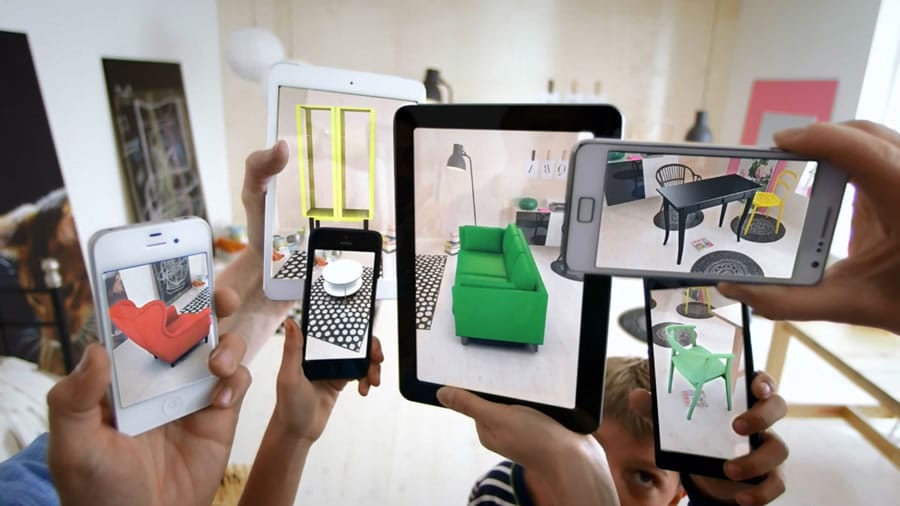
Augmented reality essay
Computer technologies have tightly integrated into our lives with especially strong momentum from the development of mobile and portable devices. Almost everyone has a mobile phone with access to the internet, tablet computers, and so on. And the nearest prospects of packaging development are in the use of computer technology that will make it increasingly interactive.
The display of this trend may be traced in the development of mobile applications which allow a person to use a service anywhere, without being tied to a home computer or to a particular bank branch (Craig, 2013; Simms & Trott, 2010). Even today, Apple has patented a new invention that allows charging the devices (phones, iPods, etc.) and updating their software right in the box with no wires. In the market there is also a technology Thin Film Electronics, which is a new category of package that will be able to wirelessly collect and transfer information from sensors for further analysis to the leading companies producing food, followed by a personification for each particular customer (Kipper & Rampolla, 2012; Hogg et al., 2013).
The rapidly developing mobile technologies found use in medicine as well. For example, the package with SIMpill technology for patients undergoing long-term therapy makes sure that the patient does not forget to take the pill and does not take any excessive doses (Kipper & Rampolla, 2012). Every time the lid of the bottle opens, the in-built cellular communication module (electronic chip) sends an SMS to the central server of the medical system On-Cue which makes the corresponding mark in the individual patient’s chart. If the bottle is opened too early or too late, the server sends an SMS reminder to the patient’s mobile phone or the attending physician, or a family member.
But probably one of the most widely used applications creating augmented reality in recent times are QR-codes in labels and packages. Their spreading is conditioned by convenience and functionality, because such a code is able to pass a relatively large amount of information (up to 3000 bytes), which would never fit in printed form on any package (Craig, 2013). By means of QR-codes consumers can instantly get to the site of this product, accurately and specifically find out all the information about the product and the manufacturer, a particular batch, terms and conditions of storage, the use of the product, etc. In addition, this information is fresh and provides the opportunity for feedback with the producer.
The possibilities of this technological solution are still far from being exhausted. Now, using a special application one can download a dish recipe with a particular product, which would also mention other required ingredients. This is already seen as a great opportunity for producers and possible consumer loyalty programs. Stepping further, the use of codes can not only help in selecting ingredients, but also in navigating around supermarket shelves in search for them (Simms & Trott, 2010; Klimchuk & Krasovec, 2013). From this perspective, truly unlimited interactive features for the future of packaging are provided by the concept of Google Glass, glasses that have access to the store database and hall maps, can read the packaging of the goods and at the same time show the video of the recipes with this product, and help find of all the other ingredients for cooking a dish on the shelves, bookmark the map, and calculate the required weight and cooking time (Kipper & Rampolla, 2012).
One of the pioneers in the use of interactive packaging at the time was Pringles brand, which produces the world-famous chips. During the 2010 World Cup, the manufacturer released a package one could play soccer within the augmented reality mode (Kipper & Rampolla, 2012). However, the time when communication between the consumer and packaging will be virtually personified in mass market scales is just around the corner. The plot of such communication will be formed according to the product views history on the Internet, purchase history and other factors: in the same way as contextual advertising on the Internet is arranged now, only using much more sophisticated algorithms that take into account a whole range of potential buyer’s parameters. Interactive systems of the future will quickly find required products in the nearest shops, offer best prices, and advise the recipes suitable for an individual, whether one is, for example, a diabetic or an athlete.
In the future, the development of interactive packaging market will undoubtedly continue with the development of mobile technologies. As a result, the future package design is also unlikely to be associated with printing houses; as Simms and Trott (2010) mark, they might have to leave the market. The classic package is very expensive, whereas using the augmented reality technology it is possible to “dress” any product in any virtual package. This trend will provide not only cost saving for the manufacturers, but also a better quality of life for consumers, as well as expand opportunities for both.

